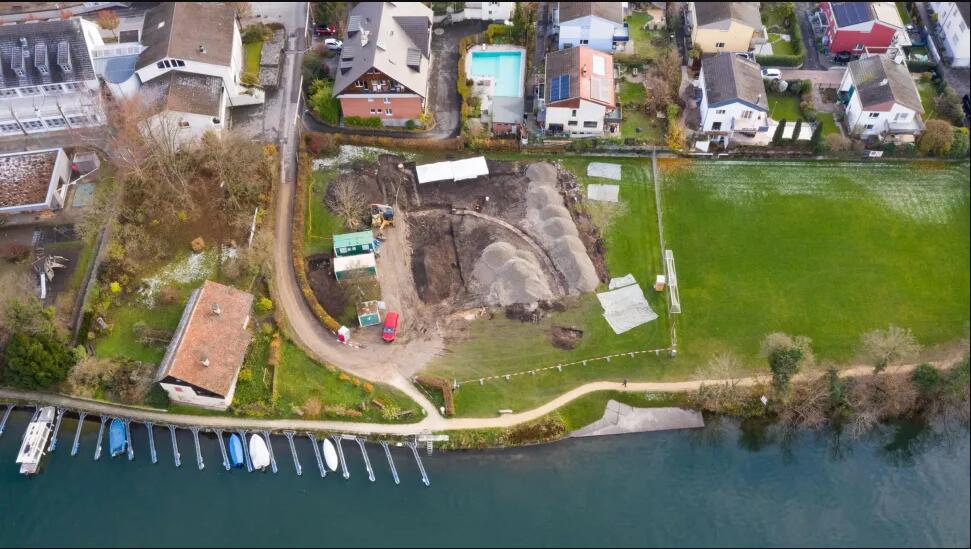Archaeologists in Switzerland have uncovered the ruins of a Roman-era amphitheater — possibly the youngest on record — where spectators likely watched gladiator fights and animal hunts with bated breath.
The oval-shaped amphitheater was built in an abandoned Roman quarry that had been in use until late antiquity. This clue, combined with the discovery of a coin dating to between A.D. 337 and 341 at the site, indicates that the amphitheater dates to the fourth century A.D., which would make it the youngest amphitheater in the Roman Empire, Jakob Baerlocher, an archaeologist at the site and head of excavations in Kaiseraugst, Switzerland, told Live Science.
A few other clues point to a fourth century A.D. date, including the composition of the amphitheater's building materials, such as its stone blocks and mortar, which are "reminiscent of that of the late antique fort wall," Baerlocher told Live Science in an email.
Archaeologists discovered the amphitheater while monitoring construction work for a new boathouse on the Rhine River in December 2021. The amphitheater — in Kaiseraugst, a municipality named for the ancient Romancity of Augusta Raurica, which sits near Switzerland's modern-day borders with France and Germany — is the third Roman amphitheater discovered to date in Augusta Raurica, according to a translated statement from the Department of Education, Culture and Sport in the Swiss canton of Aargau, which announced the find on Jan. 19.
Archaeologists with Aargau Cantonal Archaeology, an agency that works with the Aargau government, already knew about the site's ancient Roman quarry, but they weren't expecting to find an amphitheater there, according to the statement.
The amphitheater, which is about 164 feet (50 meters) long and 131 feet (40 m) wide, sits in the valley of the quarry. Nearby is the Castrum Rauracense, a late Roman fort situated on what was the northern border of the Roman Empire in A.D. 300, just a stone's throw from what was Germania.
The archaeological team unearthed a large gate to the south of the amphitheater, which was flanked by two entrances. On the arena's western side, the archaeologists found preserved sandstone blocks by another entrance. The inside arena walls were plastered, and the imprint of a post from wooden grandstands, or seats, was also visible.
"All the evidence together — the oval, the entrances and the post placement for a tribune [elected official] — speak for the interpretation as an amphitheater," representatives from the Department of Education, Culture and Sport wrote in the statement.
The discovery of an ancient Roman amphitheater is by no means a rarity. In spring 2021, for instance, archaeologists in Turkey announced the discovery of a Roman amphitheater that could have seated up to 20,000 spectators, Live Science previously reported. However, the newfound amphitheaters in Turkey and Switzerland are small compared with the grand Colosseum in Rome. That architectural marvel, built in about A.D. 70, held roughly 50,000 people, and its central arena was about 285 feet by 180 feet (87 by 55 m) — larger than the entire amphitheater just found in Switzerland.
Originally published on Live Science.

